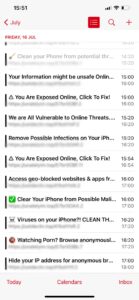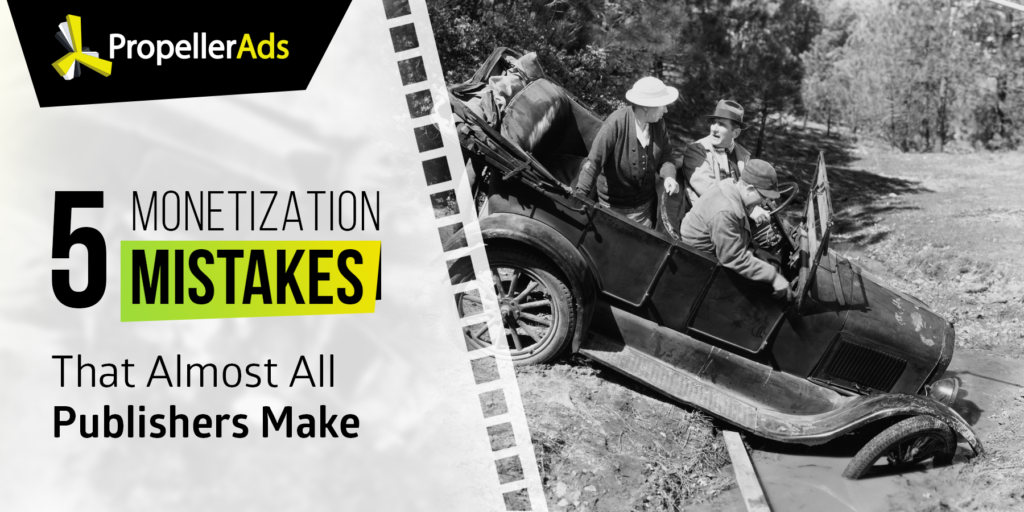Top Invasive Software and Practices to Avoid
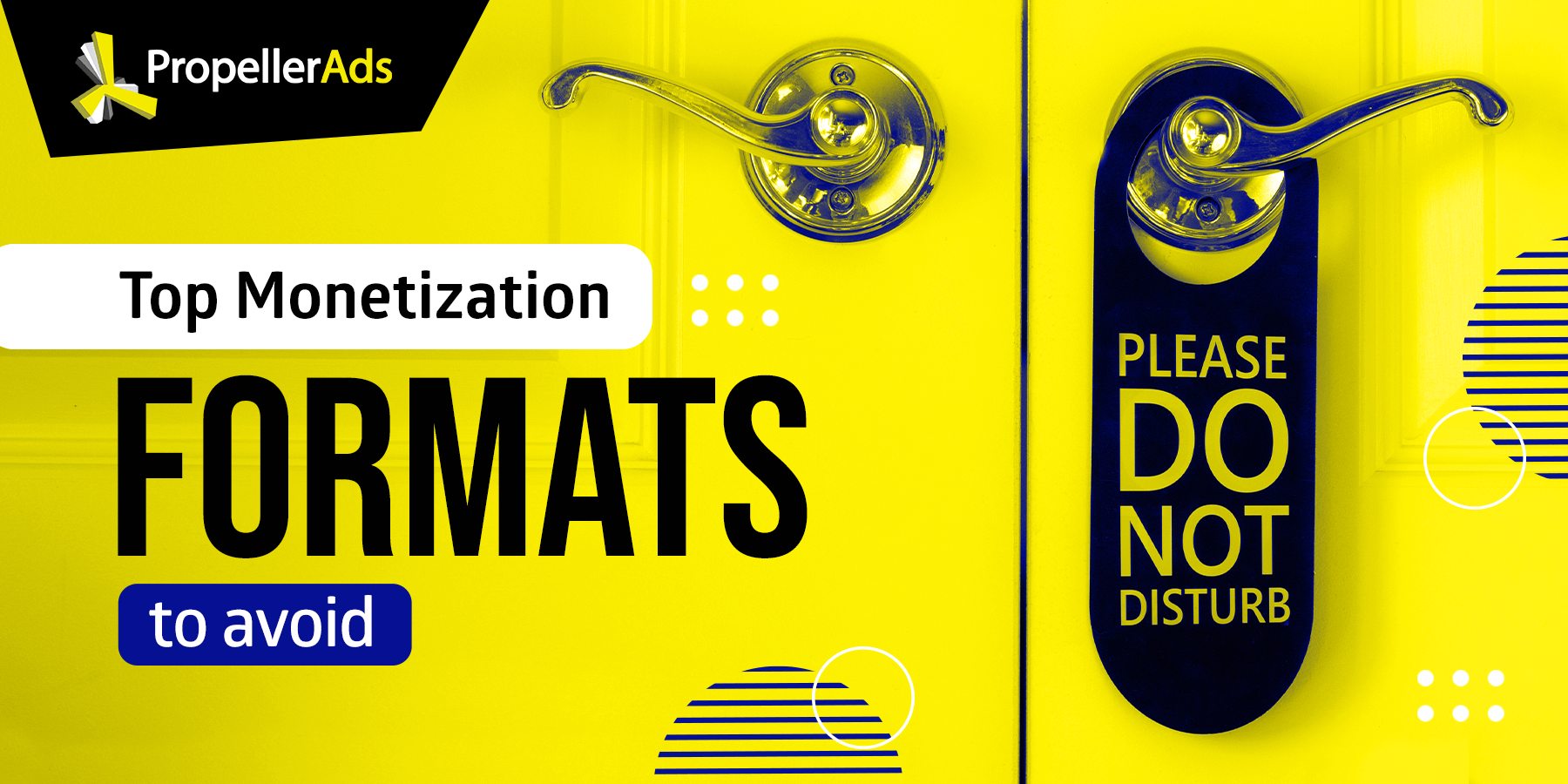
Oftentimes the forbidden apple, is the one that you most want to bite into. And the same goes for various marketing solutions that just seem too good to be real. That is because in most cases, they aren’t.
We know that you might be tempted to get a taste of some almost legit tactics to get higher traffic volumes, but there are serious reasons why you should avoid them. So let’s see together the most popular invasive practices, and why it’s important to steer clear of them.
Misleading Mac and iOS calendar Ads
First on our list is one of the most invasive kinds of malware affecting iOS users worldwide – the infamous Spam Calendar. This software works by taking advantage of a glitch in the iOS calendar development, that allows everybody to send calendar invites to users’ emails.
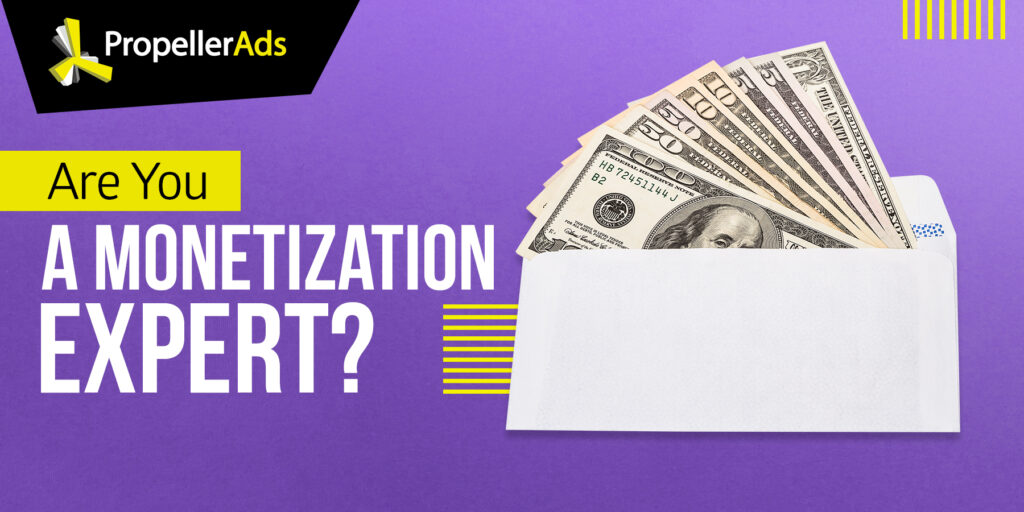
Are you a monetization expert? Take the Quiz
How does it work?
Users fall victim to this fraud by clicking on embedded links, or various attachments. These open a pop-up asking them to ‘Click to continue’. The prompt also features smaller print text explaining about the calendar subscription, but most people don’t bother reading it.
Once the user clicks on the button, notifications will start to appear on the receiver’s device looking exactly like the classic Push Notification. And we know that this format has an amazing engagement rate, enticing the users to react to it. However, most often these calendar ads end up flooding the user’s calendar.
When spammers gain access to the users’ calendars they take advantage of the fact that many have enabled the auto-accept event invites. And this is how the spamming begins.
Here is how Spam Calendar Ads look on a mobile device:
What we found
iOS Calendar notifications attract negative feedback from users. More and more articles are being published on how to unsubscribe from this feature. In fact, you can read about what the regular users and some specialists think about this software, in the articles below:
Also, there are some negative implications that can and will potentially affect your performance with honest formats:
- Because of their similarities with In-Page Push ads (IPP), your traffic might start avoiding them as well out of fear of not getting infected again;
- Since iOS Calendar Ads affect some verticals where IPP and OnClicks are mostly active – iGaming, Sweepstakes, VPNs & Antiviruses, Crypto, Dating – using them you risk getting a bad reputation and losing your traffic for these two formats as well
- After testing this software ourselves, we found that it does not pass our Policy rules. In conclusion, we believe that such advertising techniques are not good, nor honest.
Why is it bad to use this kind of software?
Checking the reviews, you will see that most users consider the iOS Calendar Ads are cheating, not user-friendly, and make digital marketing less pleasant. They also appear to be reducing user’s loyalty to sites that use this format.
Using these ads might enable users to stop receiving notifications. And this might also include safe formats like the IPP that so many publishers like and use.
If you continue using this malware, your users might block your email, or even report them as junk. If you have a subscription feature that allows people to keep in touch with your content, you don’t want that. You’ll risk losing contact with them, and eventually valuable traffic that you could monetize.
UX-Disruptive Video Ads
Video Ads usually appear right before the user can watch a video. However, they can also appear as prestitial video ads, which cover the entire screen. What makes both formats so annoying is the fact that they auto-play often with both, sound and video.
If back in the early 2000s people were just starting to hear about them, now they’ve become the new norm. And no matter the device type, video ads force the user to watch the ad instead of displaying the actual content that he’s looking for. Sadly these ads are often completely irrelevant for the user.
What do users think?
According to eMarketer’s research, users consider this the most annoying form of advertising, since it gives them no alternative than to sit and watch.
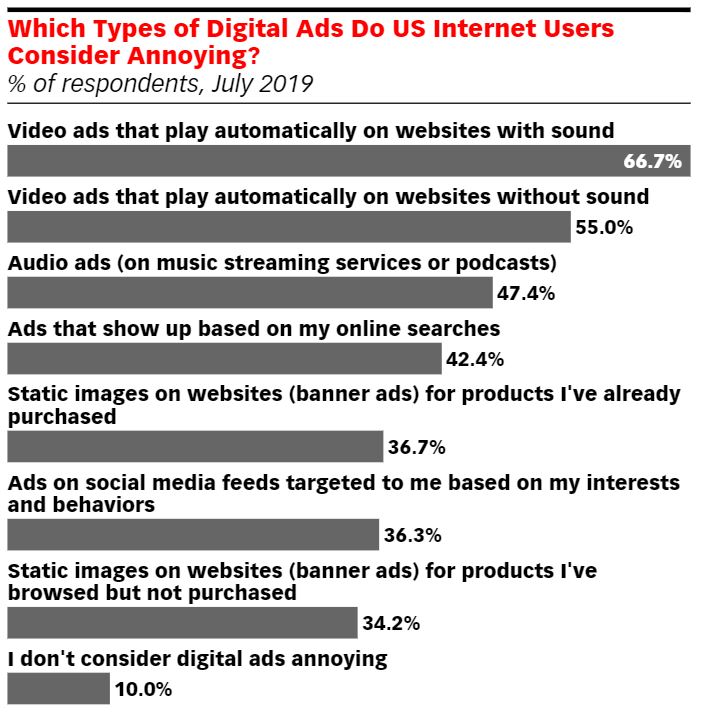
Why is it bad to use this format?
Video ads are disturbing the users’ experience. When this repeats, users leave your website, sometimes even without returning.
Moreover, prestitial ads contribute to giving a bad name to popunders as they appear above the page, covering it entirely. However, our OnClick Popunders are not using this kind of invasive technology and instead they open a new tab in the browser, below the page the user is viewing.
Since people dislike the ads that are being displayed this way, they end up hating the products advertised.
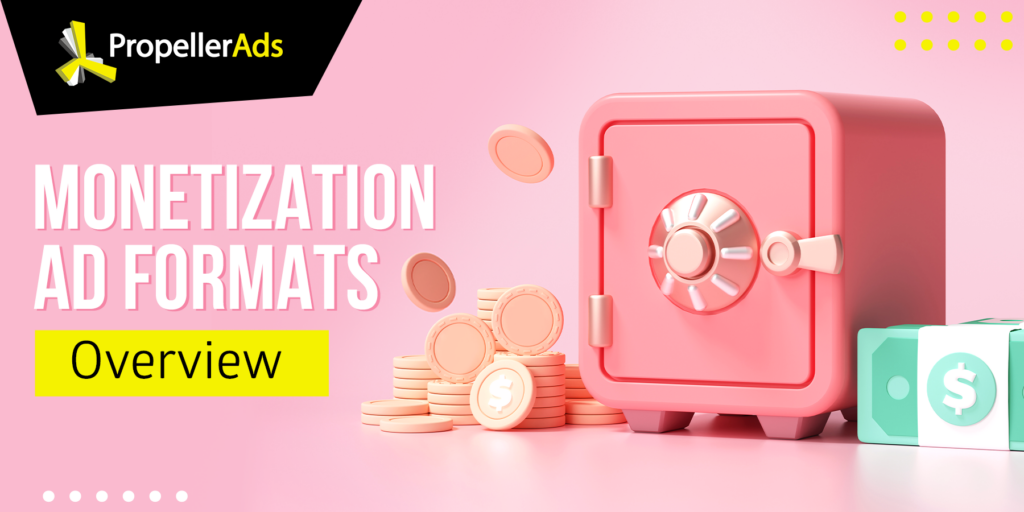
Don’t know what monetization format to choose? Read this
High Frequency turns Push into Spam
When it comes to Push Notification, the format itself is not invasive, but some practices can be very upsetting for users.
The frequency of the Push Notification is a major deal-breaker. Show too few Push, and your traffic might not even see them; use too many, and your traffic will definitely see them as spamming and disruptive for their User Experience (UX).
We couldn’t stress this enough: Push Notifications are an extraordinary format that can help publishers exponentially increase their profit. Or, when not used correctly, build a bad reputation. Here is what several Push simultaneously look like:
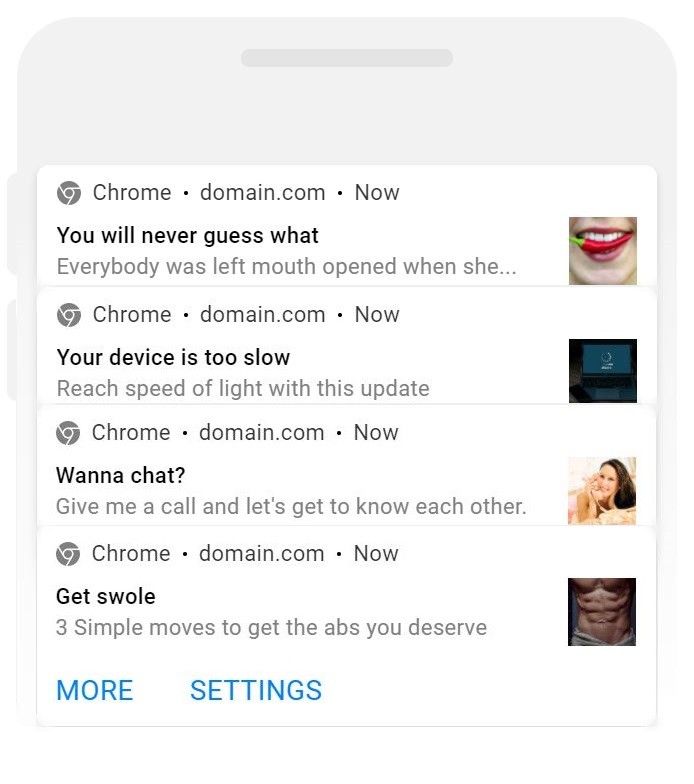
Why is this practice bad?
Since publishers increase the frequency, thinking they might get higher profit. Sadly, it doesn’t work this way. Instead, potential customers are endlessly bombarded with push notifications.
Unfortunately, showing your users too many ads makes them tired, annoyed, and ultimately they stop responding to Push altogether. But you can prevent this from happening by making sure to set up a frequency that works best for your traffic kind.
What can you do to effectively work with Push notifications?
If you’re new and lack experience, try to stick with the platform settings when it comes to setting the frequency.
When you have more experience, make sure to properly test ad formats then optimize and increase or decrease the frequency based on what works best for your kind of traffic.
What you should get from this
Properly using ads can save you from a lot of trouble. Gathering enough data to know how often your users like seeing ads. You can also find out what is the optimal time when they’re most likely to purchase, so make sure to get familiar with analytics tools.
If you’re interested in running effective formats to help with your website monetization efforts, check out the ones that you can use in your PropellerAds cabinet: Push Notifications, Interstitials, OnClick Popunders, Direct Links, or the MultiTag.
The most hated formats remain the ads that badly affect the user experience, and have absolutely nothing to do with what your user is interested in. All of the PropellerAds formats are extremely user-friendly, and you can also combine various formats simultaneously, for a more effective reach.
Which of the formats and practices that we analyzed together in this article do you think is the most obnoxious?
Feel like chatting? Drop us a line in our Telegram chat
